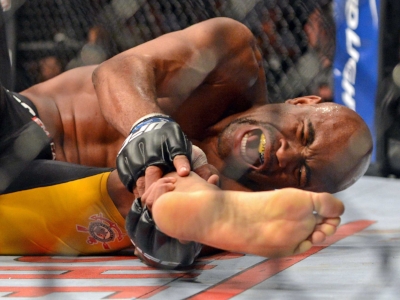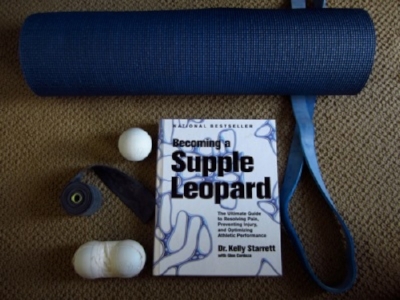Injuries Stink . Prehab Says No.
Injuries suck. I hate them. If you’re a human being, you do too.
Your training methods should be focused on improving your capacity to live, perform, and have fun. Not hurt you. If you’re frequently getting injured, it may be time to consider your program.
Think back to the times spent nursing an injury, and the countless hours forced into being a normal person. Torn knee ligaments means sitting on the couch watching crappy reality TV. Shoulder reconstructions mean an ‘immobilized’ arm for 8-12 weeks and little ability to properly wipe after number two’s. The latter comes with experience. It isn’t pretty. Believe me.
Misdirected enthusiasm, coupled with ignorance is a dangerous combination. The trap of thinking you are invincible is an easy one to fall into. This is around about the time when the injury bug ‘unfortunately’ strikes.
If you are still reading you can probably relate. Your joints hurt but you wanted to push through the pain. You were tired and feeling flat, but you attempted that PR anyway. We eventually take note of our body’s signals, but too often it is only after the damage has been done.
Some may attribute this to misfortune. And in some cases, it really is. A friend was recently on a walk along a picturesque shoreline in Fiji, when a big, bad piece of bark struck from the shore, severely breaking her ankle in the process.
Shit really does happen.
Risk will always be inherent in everything we do in our lives. There is no doubting this. According to James Altucher, “Every day we wake up, it’s amazing we made it through the night like being born is like a drag. We went through that tunnel and we survive a bloody mess and we’re hit by a doctor and then we’re alive. After that, everything is risk.”
Some things are out of our control. Living in a bubble would be 0 fun. But this doesn’t give us an excuse to be negligent with our bodies. Captain Obvious says they are the only ones we’ll ever get. Buddhists exempted.
The point is that rehabilitation implies that you’re already broken. We don’t have to wait until the damage has been done. It is too bad that pre-habilitation is just a spelling mistake to most people. It turns out that what you do around your training does actually help you to stay at your best in it.
Samuel Spiegelman wrote an excellent article in Breaking Muscle. You can find it here. In it he identifies hydration, sleep, nutrition, strength training, and mobility, as important pillars of injury prevention.
And I won’t insult your intelligence. I bet you already knew this. These are fundamentals that have been written and spoken about for so long. You know what you eat determines your recovery. You already know that it is important to properly warm up, and cool down around your physical activity.
You know that the quality of your movements is more significant than quantity.
And that massage is important. And posture is crucial. Think Kelly Starrett.
I also knew that shoulder stabilisation was essential in a sport like Brazilian jiu jitsu. Granted, the goal is to break your bones, and tear out your joints. But I wasn’t nearly as meticulous with the doing part.
I rarely actually took time out to stretch properly, and actively work on my weaknesses. If I had maybe I would have paid more attention to resources like Ido Portal’s shoulder routine:
I have come to figure that learning is the easy part. Applying the information is the challenge.
So I’m resisting the urge to transfer anymore knowledge in this post. You know enough already.
Instead, start by identifying ONE behaviour that assists in recovery. Now commit to 10 mins of it throughout the day. This might mean the video above, static stretching, foam roller work, meditation, or maybe even a combination of all of these. Use what you think you need, what know already, what works, and what feels good for you.
After you do this, schedule times throughout the coming days where you are able to complete the task. Be specific. Maintaining a fairly constant time of the day tends to make this easier. Then, track your progress daily. Use a diary. Be accountable to someone.
After some time, adjust the plan accordingly. Make changes when something isn’t working for you. Do less. Do more. You get the idea. Being injured is never fun. What we do in and around our workouts has a major role in our movement patterns. Learn from your own previous experiences, as well as those of others. Aim to be proactive rather than reactive.
This is all the information you need.
Now DO.
References
1. All about Kitchen Makeovers. Andrews, R. Found at: http://www.precisionnutrition.com/all-about-kitchen-makeovers. Retrieved 17 August 2014.
2. All about dehydration. Andrews, R. Found at: . Referenced 17 August 2014
3. The Tim Ferriss Show, Episode 18: James Altucher on How to Say “No”, Fail Better, and Build Businesses. Found at: http://fourhourworkweek.com/2014/07/11/james-altucher/ . Retrieved 17 August 2014.
4. Injury Prevention in Brazilian Jiu Jitsu: Put the Odds in Your Favor. Spiegelman, S. Found at: http://breakingmuscle.com/brazilian-jiu-jitsu/injury-prevention-in-brazilian-jiu-jitsu-put-the-odds-in-your-favor. Retrieved 18 August 2014.
5. Nutrition for Injury Recovery Part I. Berardi, J. Found at: http://www.precisionnutrition.com/nutrition-for-injury-part-1 Referenced 19 August 2014



